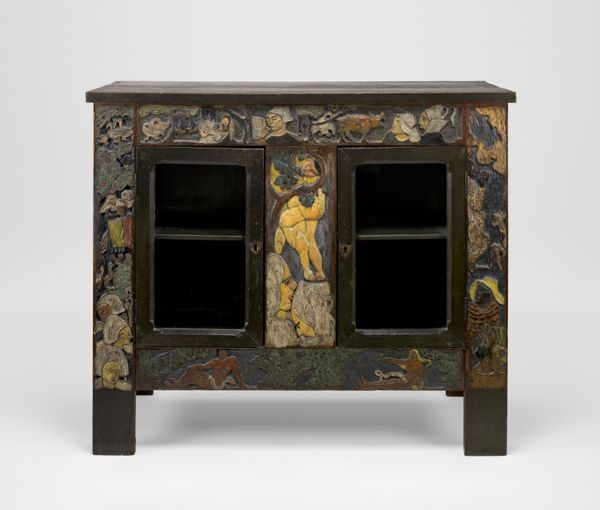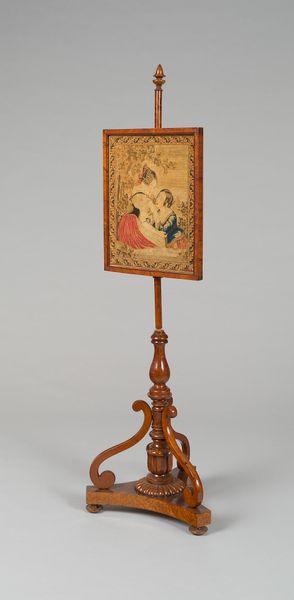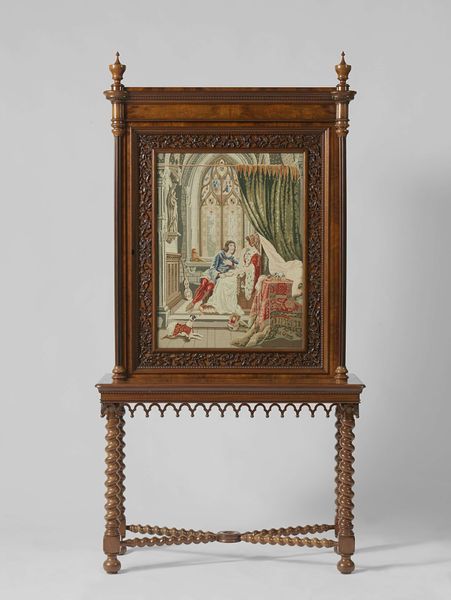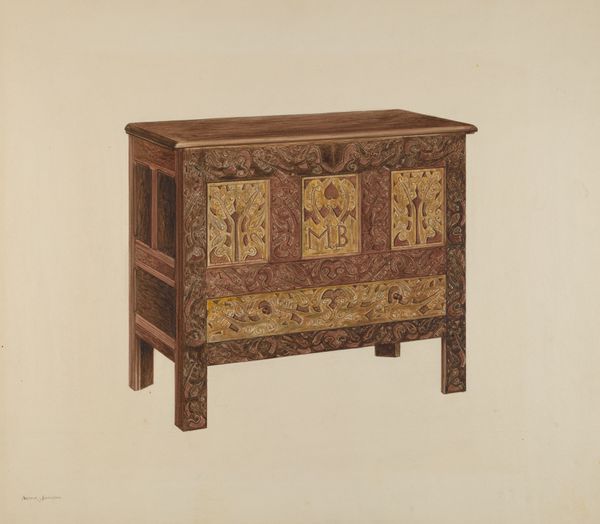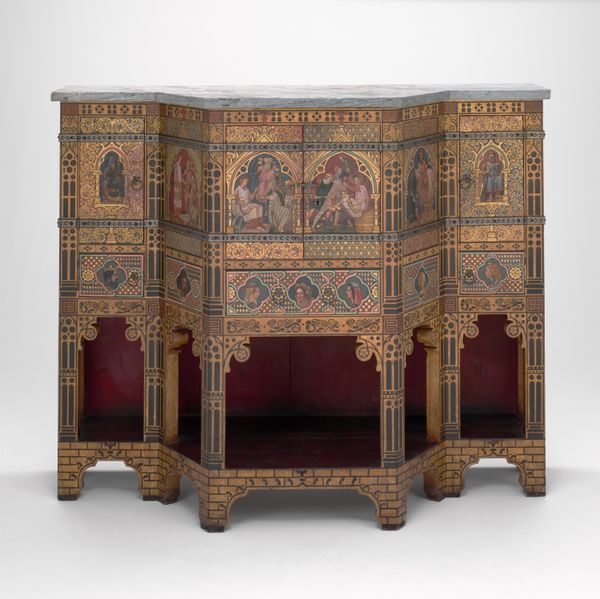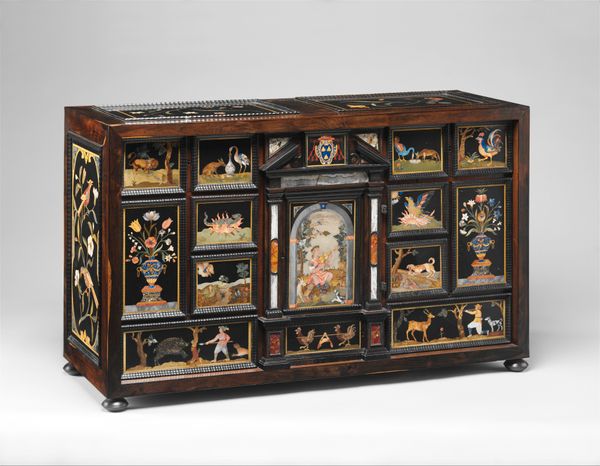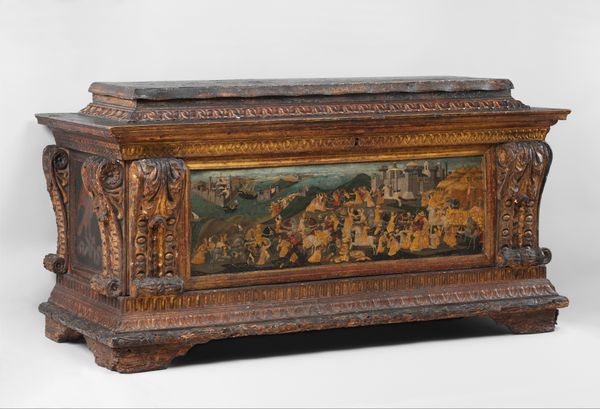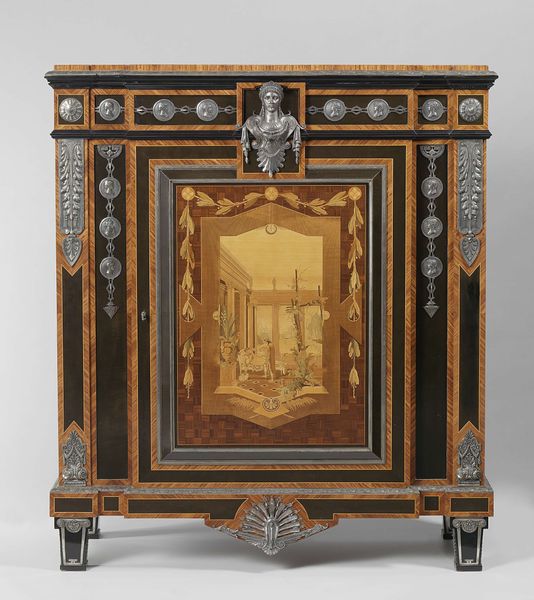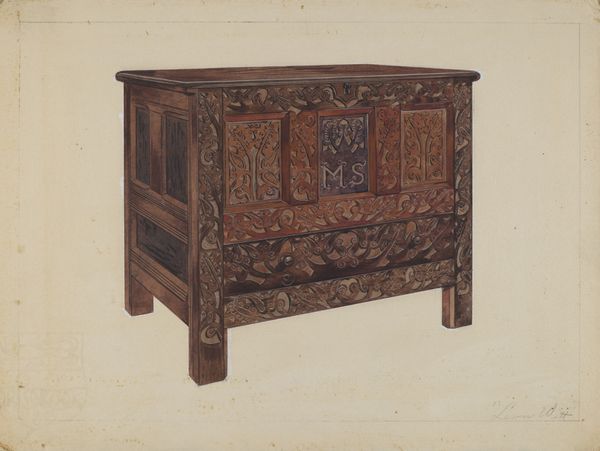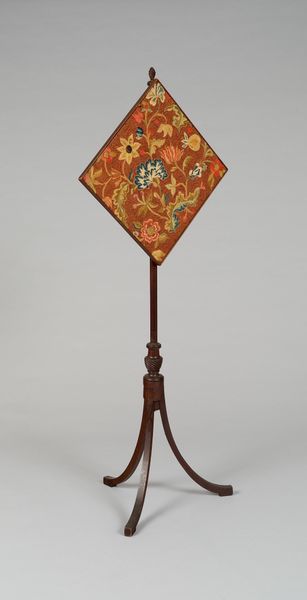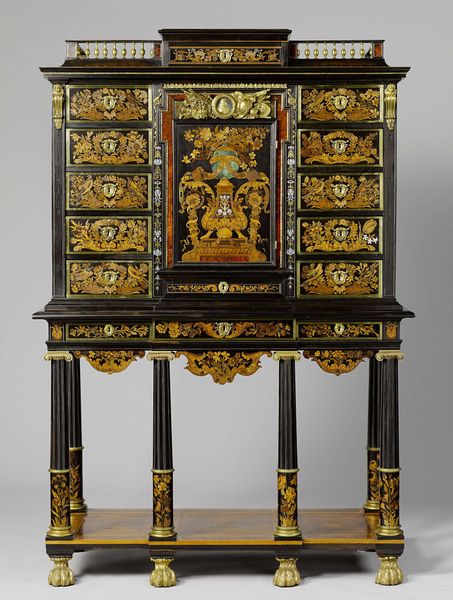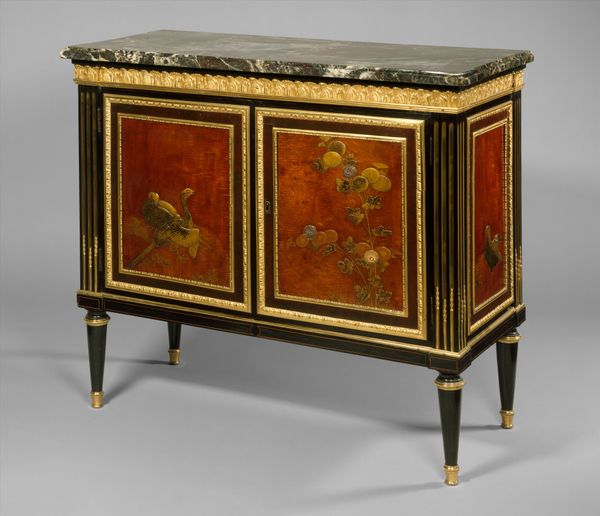
mixed-media, painting, sculpture, wood
#
portrait
#
mixed-media
#
narrative-art
#
painting
#
furniture
#
intimism
#
sculpture
#
wood
#
genre-painting
#
pre-raphaelites
#
decorative-art
Dimensions: Overall: 73 × 45 × 21 in. (185.4 × 114.3 × 53.3 cm)
Copyright: Public Domain
Editor: Here we have "The Backgammon Players," created by Philip Webb in 1861. It’s a mixed-media piece, incorporating painting and decorative art onto what appears to be a cabinet made of wood. It’s rather striking…almost medieval in its mood, but with this detailed pattern work surrounding the painted panels. What do you make of it? Curator: What immediately captures my attention is how Webb’s piece intersects Victorian ideals of domesticity with the rising artistic movement of the Pre-Raphaelites. Consider the choice of backgammon, a popular pastime. It speaks to leisure but also suggests social strategy, a game of wits, traditionally a masculine space. However, in his rendition we are faced with the presence of women. Editor: Interesting. It definitely disrupts traditional roles… Curator: Exactly. This piece almost acts as a subtle critique. The muted color palette and stylized figures recall medieval tapestries, connecting to ideas of historical revivalism favored by the Pre-Raphaelites. We should consider this art movement arose during a period of dramatic shifts in class structure as a result of the Industrial Revolution. With the popularization of art exhibitions at this time, do you think Webb’s art provides a sense of familiarity or aims to alienate its viewer? Editor: I see what you mean, maybe Webb tried to use familiar artistic mediums to make a statement about traditional domestic roles at a time when there were large cultural shifts in Victorian England? Curator: Precisely! By embedding these themes within the decorative arts, it integrates the revolutionary dialogue directly into domestic life. Art such as this could easily challenge existing power structures as it quietly invited conversation on equality, freedom of expression, and class struggles within the home. Editor: That makes me see the artwork in a completely different light, it’s definitely more than just a simple scene, it carries a subtle yet complex social commentary. Curator: Absolutely, and thinking about art as embedded in its specific historical and political context enables us to decode its nuanced meaning, prompting us to reconsider our values, identities, and places within it.
Comments
No comments
Be the first to comment and join the conversation on the ultimate creative platform.
